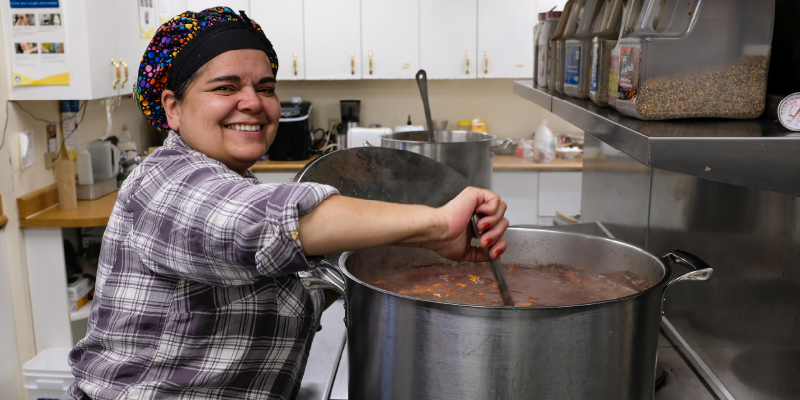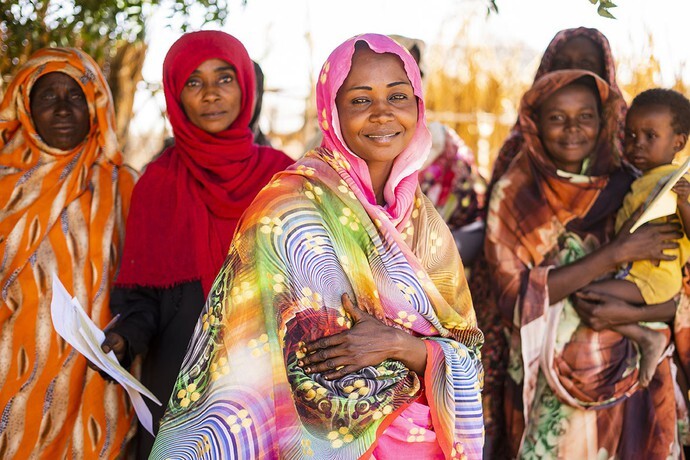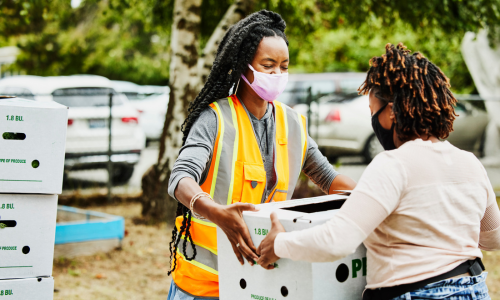This blog post was provided by Wade Thorhaug from the Qajuqturvik Community Food Centre.
Food insecurity in Canada’s north is a frequent news headline. For years statistics have shown that one in every two households in Nunavut face shortages of healthy food – whereas the Canadian average is one in eight.1 Many Canadians likely feel this is inevitable – if the cold climate and tundra landscape do not allow for agriculture, and southern food sources are thousands of miles away, it makes sense that food would be expensive and hard to come by, right?

A Neglected Food Industry
Climate and remoteness are among many reasons why store-bought foods in Nunavut are expensive, lacking in variety and often poor quality. However, by focusing on foods imported from southern Canada we ignore an extremely important food type in northern nutrition and culture. Before the Canadian government began establishing settled communities in Canada’s Arctic in the 1950s and 60s, Inuit were largely food sovereign2, meaning they had a sustainable supply of food and full control of their food system.
‘Country food’ (known as inuksiut in the local language, Inuktut) consists of all the food that can be harvested from the tundra and surrounding seas. For the most part this is meat – sea mammals such as seals and narwhals, land mammals such as caribou and muskox – but it also includes seafood like Arctic char and clams, and berries that ripen in late summer. For generations this was the main source of food, and only recently have diets shifted to incorporate less and less country food.
Today, country food contributes to less than a fifth of Nunavummiut diets.3 Part of this can be explained by a greater variety of alternative options, but for the most part it is lack of supply. Most Arctic animals are healthy and in numbers that can be sustainably harvested – the problem is hunters’ reduced ability to access them. The reasons are varied and rooted in the effects of colonialism on Inuit communities. In the present day, hunters have all the necessary skills and knowledge, but many lack the financial resources to do their work.
Food security can be broken down into three components: availability, accessibility and utility. In Nunavut communities today, food is always available in grocery stores, but due to high prices (2 or 3 times the average in southern Canada) it is not easily accessible to everyone in a territory where the poverty rate is nearly double the national average.4 Its utility is also limited – some communities only have one or two small stores, and long supply chains mean perishables are not always fresh. Most importantly, what you find on grocery shelves is not local food and can never rival the cultural and nutritional importance of country food.
As Canadians stock their pantries for the holiday season knowing this year will be unlike any other, for many the accessibility of food is a bigger problem than ever. Nunavut remained COVID-free for the first six months of the pandemic, but within a month of the first case being confirmed the per capita number surged to 5 per 1,000 people and a lockdown was imposed. Many who were laid off in the spring are again unable to return to work, due to ongoing restrictions. And for those who benefitted from the Canada Emergency Response Benefit (CERB), they may find themselves in debt to the government once their income taxes are filed in the coming months. With so much uncertainty, many will find it hard to celebrate.
Helping Individuals and Working Towards Big Solutions
At Qajuqturvik Community Food Centre, we recognize that boosting incomes and supporting our local food system are key when faced with a massive issue such as food insecurity. We support local hunters by incorporating country food into our meals and grocery distributions. We offer a pre-employment training program and food skills workshops to help people reach their individual goals. We provide peer advocate services to bridge the gap between community members and other services. But above all we work to create a space that is dignified and brings the community together through food.
The effects of the pandemic and the need for social distancing have forced us to limit volunteer and community involvement in our programs while continuing to meet our community’s need for good food. And while the experience has been challenging, it has provided us with some valuable insights. When CERB first started to reach Canadians’ bank accounts in early April, we saw a sudden and steep decline in the demand for our food access programs. This vividly demonstrated a fact supported by research: that when low-income folks see a boost in income, it goes primarily towards meeting their basic needs.
We also recognize that while charitable activities provide essential support to people in need, they are not a solution to society’s problems. For this reason we combine our front-line work with advocacy initiatives aimed at bringing about the systemic change that can have widespread, long-lasting impacts on marginalized Canadians. And with so many of our society’s institutions and long-held practices upended by the pandemic, now is the time to seriously consider deep changes to a system that even before 2020 left so many behind.
Learn more and make a donation in support of the Qajuqturvik Community Food Centre today.
References:
1. PROOF: Household food insecurity in Canada
2. Food Secure Canada: What is food sovereignty?
3. Nunavut Food Security Coalition: Country food
4. Citizens for Public Justice: Poverty Trends 2018
Updated on November 4, 2024
Donate Now




